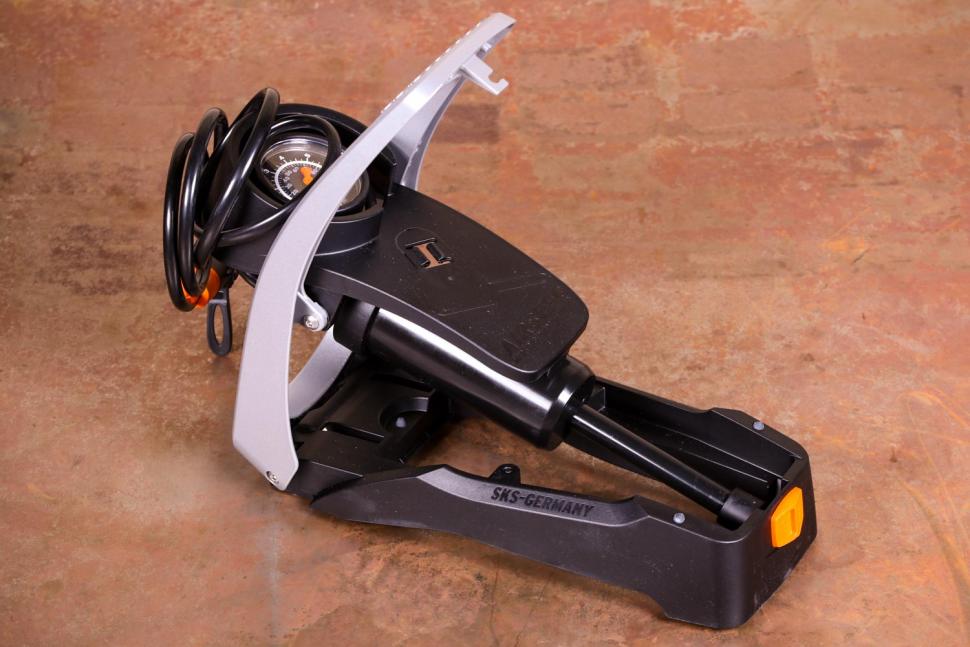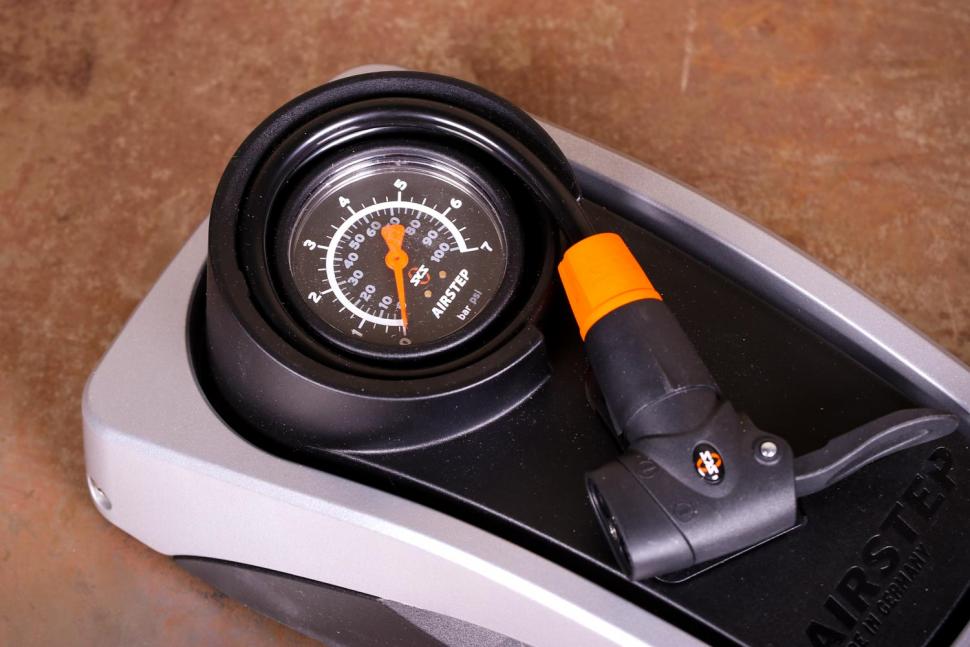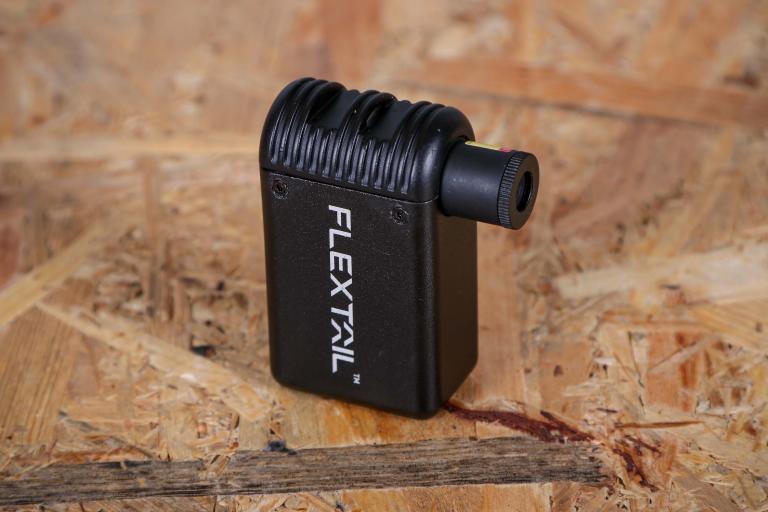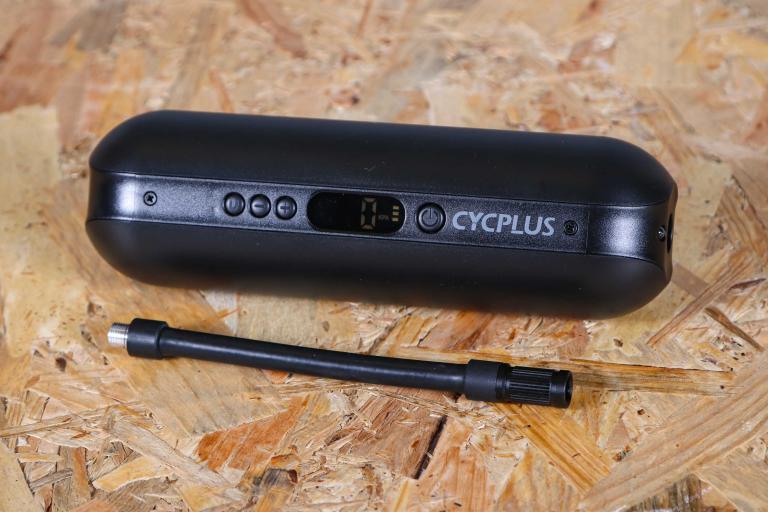- News
- Reviews
- Bikes
- Accessories
- Accessories - misc
- Computer mounts
- Bags
- Bar ends
- Bike bags & cases
- Bottle cages
- Bottles
- Cameras
- Car racks
- Child seats
- Computers
- Glasses
- GPS units
- Helmets
- Lights - front
- Lights - rear
- Lights - sets
- Locks
- Mirrors
- Mudguards
- Racks
- Pumps & CO2 inflators
- Puncture kits
- Reflectives
- Smart watches
- Stands and racks
- Trailers
- Clothing
- Components
- Bar tape & grips
- Bottom brackets
- Brake & gear cables
- Brake & STI levers
- Brake pads & spares
- Brakes
- Cassettes & freewheels
- Chains
- Chainsets & chainrings
- Derailleurs - front
- Derailleurs - rear
- Forks
- Gear levers & shifters
- Groupsets
- Handlebars & extensions
- Headsets
- Hubs
- Inner tubes
- Pedals
- Quick releases & skewers
- Saddles
- Seatposts
- Stems
- Wheels
- Tyres
- Health, fitness and nutrition
- Tools and workshop
- Miscellaneous
- Buyers Guides
- Features
- Forum
- Recommends
- Podcast
review
£64.99
VERDICT:
Well made and warrantied, it's a good choice for those with arm/back issues using a track pump
Weight:
1,430g
Contact:
At road.cc every product is thoroughly tested for as long as it takes to get a proper insight into how well it works. Our reviewers are experienced cyclists that we trust to be objective. While we strive to ensure that opinions expressed are backed up by facts, reviews are by their nature an informed opinion, not a definitive verdict. We don't intentionally try to break anything (except locks) but we do try to look for weak points in any design. The overall score is not just an average of the other scores: it reflects both a product's function and value – with value determined by how a product compares with items of similar spec, quality, and price.
What the road.cc scores meanGood scores are more common than bad, because fortunately good products are more common than bad.
- Exceptional
- Excellent
- Very Good
- Good
- Quite good
- Average
- Not so good
- Poor
- Bad
- Appalling
The SKS Airstep footpump is a good option for inflating tyres of all types if you have issues with your arms or back and find a traditional floor pump hard or painful work. It does take about twice as long, mind.
- Pros: Large, easy-to-read bar scale, compact storage, quality materials, no upper-body pain or fatigue
- Cons: Almost invisible psi scale, takes over twice as long to inflate to given pressure as a trackpump, limited to 102psi, pricey
The Airstep is SKS's new take on the very old-school footpump, historically a wobbly, slippery affair often found languishing in the shed once your parents realised how bad they really were. Working with ergonomics expert SQlab, SKS has reimagined the footpump with broader surfaces, although it still wobbles a bit. It could possibly do with some fold-out supports, but I'm nitpicking here as my foot never slipped off the pump as it certainly has when using the traditional steel designs. It won an iF Design award in 2019.
> Find your nearest dealer here
Made from strong, reinforced plastic and alloy, it features a five-year warranty, giving you an indication of the faith SKS places in its product. My experience of SKS customer service has been exemplary, so you have no concerns for the longevity of your purchase.
After locking down the foot lever, the neatly-coiling plastic hose disappears inside the pump wrapped around the gauge, and the head snaps into place. This gives a compact package easily stored in a cupboard, hung on a wall using the included plastic mount, or chucked in a car boot or bag.
The dual-valve head is a solid affair as you'd expect from SKS, sealing tight around valves. The action of the locking lever is smooth and positive, and it never released unintentionally. The hose is good for connecting to valves about 1.2m off the floor, so perfectly OK to use on bikes set in workstands. The dual-head automatically 'senses' the valve that's connected and routes air to it; on a couple of occasions when inflating from flat it didn't do this the first time when connected to a Presta valve, but re-seating it worked.
The pressure gauge features a large, bright-white bar scale on the outside, but annoyingly the psi scale is smaller, on the inside and in a dark grey, meaning it's unreadable when on the floor and moving about a bit as you pump. I had to pick the bar reading that approximated my psi target and aim for that. In my 35-odd years of faffing with bikes no one has ever referred to bike tyre pressure in bars, so I'm not sure of SKS's rationale here. It missed a trick not including a user-adjustable target indicator, as is often fitted to even low-cost floorpumps.
Under pressure
Inflating a 28mm tyre to 80psi took 38 pumps/33 seconds, to 100psi was 75 pumps and 1 minute 15 seconds in total.
Doing the same 28mm tyre to 100psi with a trackpump took 40 strokes and 30 seconds – but using arm/back muscles, after several repeats I could really feel the work. There's a reason cyclists use legs instead of arms to get themselves up hills, and the SKS Airstep uses the body's largest muscle groups to good effect.
> How to choose the correct tyre pressure
Other obvious uses around the home include car or caravan tyres, as well as inflating tubeless air tanks – but the 100psi limit means you're somewhat restricted there; even small tanks usually going to around 160psi to generate the inrush of air normally required to seat tubeless.
Value
At £65 it's definitely on the pricey end of the pump spectrum – for that money you can get a darn nice trackpump. So unless you do suffer from upper-body ailments and need to inflate to a maximum of 100psi using your legs, a trackpump might be a better buy.
> Buyer's Guide: 12 of the best trackpumps
As in all things cycling, it's horses for courses, and just because you're fit and able doesn't mean SKS isn't onto a winner of a product here. This is especially relevant with the boom in older generations cycling on heavier e-bikes requiring larger tyres at higher tyre pressures, who are more likely to benefit from using legs instead of arms to stay correctly inflated. This is SKS's target market for the Airstep, and if you can afford an e-bike the £65 price tag here to keep your tyres correctly inflated isn't likely to be an issue.
All in all, the SKS Airstep is a high-quality product backed by a cracking warranty, only let down by a pressure gauge optimised for obscure bar tastes.
Verdict
Well made and warrantied, it's a good choice for those with arm/back issues using a track pump
road.cc test report
Make and model: SKS Airstep Foot Pump
Size tested: Max 102psi/7 bar
Tell us what the product is for and who it's aimed at. What do the manufacturers say about it? How does that compare to your own feelings about it?
It's for people who find using a trackpump difficult. Or who need to be able to store a pump in a small space. Squarely aimed at the larger-tyred e-bike rider.
SKS says: "AIRSTEP combines the virtues of a classic floor/foot pump and the latest 'Made in Germany' technology. First class materials of the highest quality, a well-conceived design and user-friendly features such as the large pressure gauge, the integrated storage space for the spiral hose and multivalve head (for use with all valve types) provide the pump with a completely new and innovative appearance for inflation. An ergonomic activation of the robust aluminium foot pedal enables the maximum possible pumping performance of 7 bar/102 psi without difficulty. Pumping has never been so easy or easy on your back. After pumping, stirrup is folded down and locked in place with the push of a button. Its compact form and the wall bracket are a perfect space-saving solution.
"AIR-GONOMY meets evolution: the new AIRSTEP combines the virtues of a classic foot pump with the high technology by MADE IN GERMANY. Perfect materials of the highest quality, a well thought-out construction and userfriendly features such as the large pressure gauge and the integrated storage space for the hose give the pump a completely new pump experience. The MulitValve head serves all valve types. Due to the ergonomic operating of the robust aluminum foot step the AIRSTEP. is able to reach the highest possible effective pumping pressure up to 7 bar effortlessly. Fast, comfortable and easy. Inflating has been never simpler and easier for the backbone: truly 'air-gonomic'! Professionally developed and scientifically confirmed: a unique foot pump is the result of support provided by the ergonomics experts at SQlab, this requiring a considerably reduced effort when pumping up tyres when compared with conventional floor pumps (tested by the Department of Sport Science at the University of Bayreuth)."
Tell us some more about the technical aspects of the product?
Goes to 102psi. That's about it.
Rate the product for quality of construction:
10/10
Typical high standards from SKS.
Rate the product for performance:
8/10
As foot pumps go it performs well, but is easily beaten in the speed to target race by a track pump.
Rate the product for durability:
9/10
It will outlast you, most likely.
Rate the product for weight (if applicable)
7/10
Not really relevant, but the heft is a sign of quality.
Rate the product for comfort (if applicable)
8/10
Ergonomics are the Airstep's claim to fame, and it is indeed comfortable to use.
Rate the product for value:
7/10
For me, £65 is a lot of cash to replace a pump I have no issues using. But for those precluded from track pumps, the value would be high. (The Fumpa Pump I tested earlier this year is £139.)
Tell us how the product performed overall when used for its designed purpose
Issues reading the pressure gauge aside, it did the job well.
Tell us what you particularly liked about the product
The hose storage and compactness when done. Tidy, literally.
Tell us what you particularly disliked about the product
The gauge. It's a silly choice.
How does the price compare to that of similar products in the market, including ones recently tested on road.cc?
Given you can buy footpumps from many outlets for less than £10, at £65 this is definitely a premium purchase.
Did you enjoy using the product? Yes
Would you consider buying the product? Not really, as I'm fine with a track pump.
Would you recommend the product to a friend? Yes, if they found a track pump unusable.
Use this box to explain your overall score
If the pressure gauge clearly read psi I'd award another half a star. And if it were £40 instead of £65, likewise.
About the tester
Age: 45
I usually ride: Merida Ride 5000 Disc My best bike is: Velocite Selene
I've been riding for: Over 20 years I ride: A few times a week I would class myself as: Expert
I regularly do the following types of riding: cyclo-cross, club rides, general fitness riding, mountain biking, Dutch bike pootling.
Living in the Highlands, Mike is constantly finding innovative and usually cold/wet ways to accelerate the degradation of cycling kit. At his happiest in a warm workshop holding an anodised tool of high repute, Mike's been taking bikes apart and (mostly) putting them back together for forty years. With a day job in global IT (he's not completely sure what that means either) and having run a boutique cycle service business on the side for a decade, bikes are his escape into the practical and life-changing for his customers.
Latest Comments
- mark1a 1 sec ago
I think it depends on the Lidl. There's two near me, one is just half a mile away and has been open over 20 years. The bike parking is not great,...
- hawkinspeter 22 min 34 sec ago
How about just putting the 20mph limits in wherever there's been a traffic collision? That could change the nature of motorways though.
- OnYerBike 58 min 2 sec ago
Obviously we only have the snippets of information from the newspaper report, but Mr Brayley might be correct....
- MattKelland 1 hour 21 min ago
Thanks! For some reason it's not showing up here: https://road.cc/show/tags/nmotd/145572
- brooksby 1 hour 22 min ago
But it's OK because our taxes are being used to subsidise those poor hard-done-by motorists by freezing fuel duty
- Surreyrider 1 hour 17 min ago
Yeah, I saw the Standard headline and thought 1 how many drivers have jumped red lights and been fined (after all they're the ones risking the most...
- PeteZahad 1 hour 39 min ago
I have the same issue and recently switched to hot waxing the chain and keeping the drive train free from conventional grease. On dry days a simple...
- bianchi51 2 hours 5 min ago
The Redshift bar has its potential uses; I've had a Giant Defy for a few years and I'm not as flexible now as when I bought it. I would really like...
- Benthic 2 hours 44 min ago
Highway Code rule 237 If you are dazzled by bright sunlight, slow down and if necessary, stop.
- Secret_squirrel 3 hours 29 min ago
Im betting these come out of the same factory as the SG and the Grip grab gloves. Identical apart from the Silicon overlay....














Add new comment
10 comments
Bar doesn't have the granularity for measuring bike tyre pressures, there's a world of difference between 80psi (5.51bar) and 90psi (6.20Bar). Reading that off on every pressure dial I've seen would have you squinting to do it in Bar. You need a digital display to accurately use Bar.
Also, Bar isn't even the S.I. unit of pressure so it'd make more sense to use kPa instead, especially as that would allow much greater control over the pressure.
That's only because you're picking psi values which sit exactly on the 'ticks'. If you wanted (say) 83 psi, then that's about a third of the way between 80 and 90. Just as 5.5 bar is halfway between 5 and 6 (you could also call it 55 decibar). There is literally no difference; it just depends on what seems natural to you.
Speaking to a friend here in Switzerland, I mentioned that I was using about 90 psi. He looked blankly at me until I said, "It's a tad over 6 bar". Then he understood. (Well, he did once I explained what 'tad' meant...)
I find this an odd perspective. The same dial is in use, whether the markings are every 0.1 bar or every 1psi. The needle still has the same range of travel.
mine goes up to 11.
"I had to pick the bar reading that approximated my psi target and aim for that. In my 35-odd years of faffing with bikes no one has ever referred to bike tyre pressure in bars, so I'm not sure of SKS's rationale here."
No doubt you have never heard of kilometres per hour? millimetres? Pascals? Anywhere in the modern and metric world uses bar as a pressure measurement . Clearly you have never ridden a bike outside of the UK...
I've only lived in four countries and worked / ridden in about 30, so yeah, limited experience.
Given this pump is sold in the UK, Australia and most importantly the USA, the one-choice-only of Bar as the readable scale is odd. It's not a deal-breaker, as it's easy enough to work out where you need to aim for.
double post
Just done a quick search of t'interweb & found 4 similat items for under £20.00 on E-bay & Amazon. Seems dear for what it is.
Well, it just happens to be the standard unit in Europe and outside the English-speaking countries